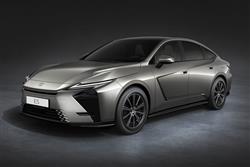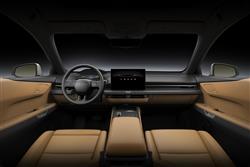Lexus ES - ABC Leasing
AN ES-SENTIAL LEXUS(some text hidden)
By Jonathan Crouch
Ten Second Review word count: 82
The Lexus ES is a full-sized Executive saloon that might get forgotten in a segment dominated by cars like the BMW 5 Series, the Mercedes E-Class or the Audi A6. Yet it doesn't deserve to be. In this rejuvenated MK8 form, it offers (non-Plug-in) full-Hybrid power or a full-EV drivetrain and either way, delivers a better value proposition than its Teutonic competitors. If you want to spoil yourself in this class, but at sensible money, the ES could be an appealing package.
Background word count: 163
Europe likes to think it's the world's most important automotive market but in truth, that honour now belongs to China. Increasingly then, we going to get global brands creating cars prioritising the Oriental customer. Here's a good example, the eighth generation Lexus ES. We've only had the ES in Europe since 2019, when it replaced four generations of the brand's GS model in the full-executive segment dominated by European players like the BMW 5 Series, the Audi A6 and the Mercedes E-Class. The first six generations of ES weren't sold on our continent - but we didn't miss much as they were broadly just rebranded versions of the Toyota Camry saloon which this model line has always been based. The MK7 ES was a bit less a Camry clone and this MK8 gets even more of its own identity. And, even more importantly, for the first time can be had not only as a Hybrid but also with the option of full-EV power.
Pictures (High res disabled)

.jpg)
.jpg)
.jpg)
.jpg)
.jpg)
.jpg)
.jpg)
.jpg)
.jpg)
.jpg)
.jpg)
